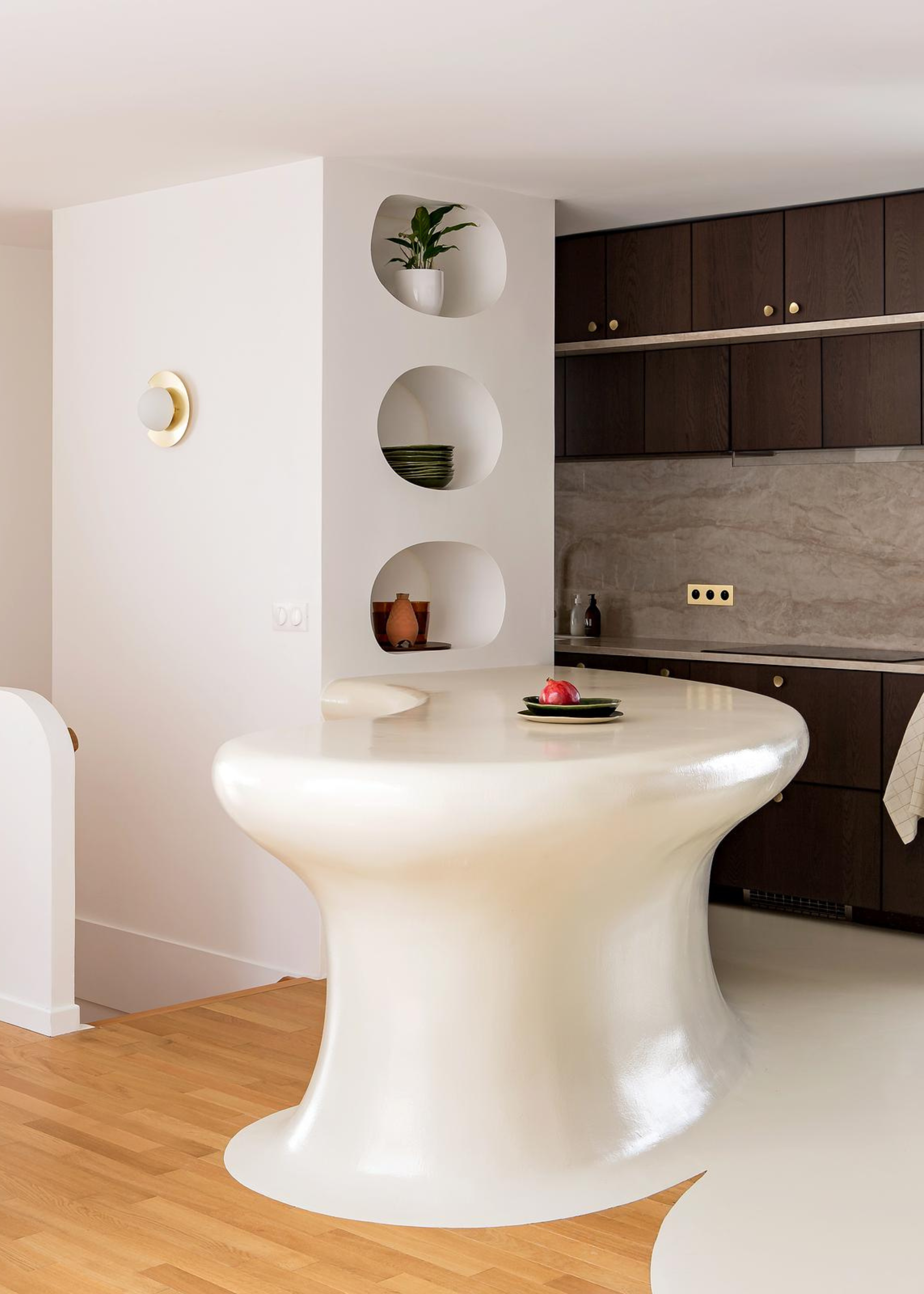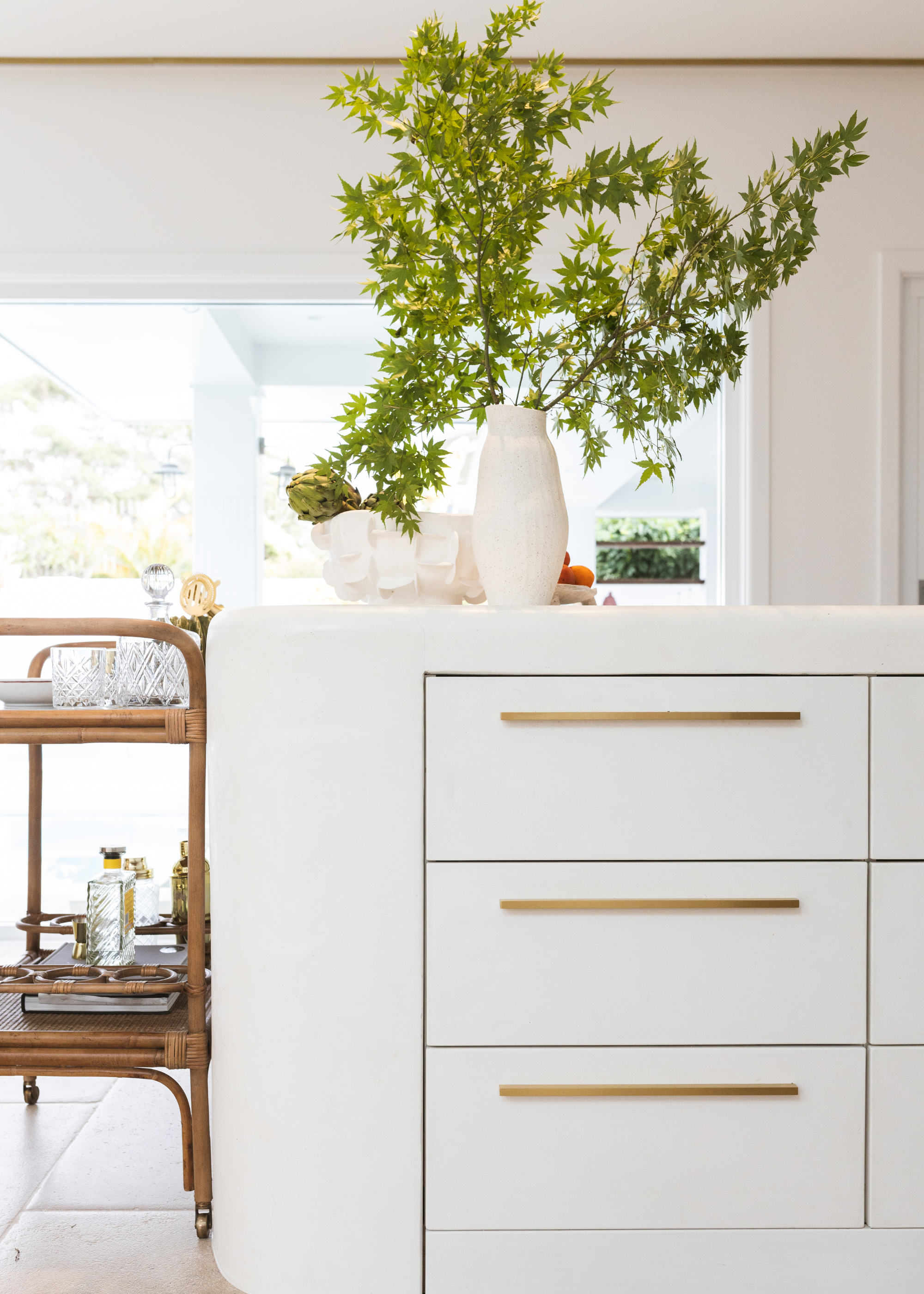
Having moved across the world to London, one of the main things I have struggled with is downsizing my belongings to find space in a small apartment. And while I have found my way around organizing most of the minimized spaces in my apartment, the kitchen is where I've struggled most.
One of the things I wish I knew before relocating is how to pare back my culinary menagerie so every single item has a space of its own. And learning how to declutter a kitchen is not enough. It's important to understand what to get rid of before you even begin to unpack in a new home.
So here's some insight into the non-negotiables that simply must go.
1. Duplicate Dinnerware and Cookware

Gerrit Jan Reinders, storage organization expert and CEO and founder of BOXIE24, tells me that the first thing to get rid of when you're downsizing to a small kitchen is duplicate dinner sets and cookware.
"You don't need more than one set of pots, pans, or dinnerware," he explains. "Downsizing is the ideal time to select your most-used and functional set for everyday use."
Color: Ecru
This Set of 4 Akoya Pearl-Edged Stoneware Plates is versatile, elegant, and perfect for fashionable entertaining.
2. Underused Single-Purpose Appliances

According to Gerrit, underused single-purpose appliances are not worth organizing in a small kitchen. "That waffle maker or fruit slicer might seem handy," he adds. "But if it hasn’t been used in over a year, it’s likely just taking up space."
One of the major kitchen appliance trends of the year is all-in-one culinary equipment. And these appliances will be your saving grace in a cooking space where every inch of real estate counts.
Color: Black
Air fryers are the moment, and this Vertical Dual Stack Air Fryer from Olsen & Smith works with vertical storage in a clever way.
3. Mismatched Food Storage

"The overflowing mismatched Tupperware, plastic food containers without lids, or lids without accompanying bottoms are one of the biggest kitchen clutter culprits," says Gerrit.
Instead, he recommends reserving only a slim line of working, stackable containers with matching tops that you regularly use. This will streamline your kitchen storage and add to the visual appeal of the space, while making your space work for you.
Color: Pink, Red, and Yellow
I love all things Alessi, and a couple of these adorable Mr. Sottsass Glass Containers will upstyle your open kitchen storage effortlessly.
4. Expired Culinary Ingredients

"People are often surprised by how much old, expired condiments and spices are stored in their kitchen," says Gerrit. "It is a good idea to keep your pantry and fridge organized, having everything fresh, useful, and suitable for your present consumption patterns."
So if you can't remember the last time you explored the depths of your spice storage, then consider this your sign to empty your cabinets and ditch anything that's past expiry.
Quantity: 12 Jars
You simply can't go wrong with these minimalist Bamboo Lid Spice Containers from Livabl.
5. Promotional Mugs and Novelty Drinkware

"Most kitchens hold a stash of freebie mugs from events, branded water bottles, or novelty glasses that rarely get used yet consume significant space," he explains. "These items often multiply unnoticed, becoming clutter."
Banishing these (typically tacky) drinking accessories will allow you to invest in stylish glassware that will bring you joy and compliments from your guests, too.
Color: Sky
Swap your novelty mugs for beautiful drinkware. Like this sweet Rika Espresso Cup from Anthropologie.
FAQs
What Do I Do With Unwanted Kitchen Items?
For items in good, usable condition, Gerrit recommends donating them to local charities, thrift stores, and food banks. "Consider selling quality appliances through online marketplaces, local yard sales, or consignment shops. This can recover some expenses and guarantees items end up in someone's hands who'll actually use them," he adds.
"A lot of items like old glass jars, plastic tubs, and even some metals can be recycled. Research programs or recycling facilities in your area that take household items. Broken, beyond-repair, or really unusable items need to be disposed of based on your local waste guidelines."
Now that you're done with your kitchen, let's move on to sorting through the rest of your home. And my personal advice would be to identify the things to throw out of your closet when decluttering, so you can put your best, most well-dressed foot forward.







